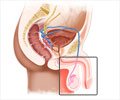The United States Food and Drug Administration has approved a new molecular test for distinguishing the common causes of vaginitis.
- Vaginitis is an inflammation of the vaginal tissue that commonly affects women of 15-44 years of age.
- The FDA has recently approved a new molecular test for distinguishing common causes of vaginitis.
- The new test has been found to produce accurate results when compared to traditional laboratory tests.
The test has been found to be accurate and more objective than traditional laboratory tests.
Charlotte Gaydos, Dr. P.H., M.P.H., professor of Medicine and director of the Johns Hopkins Center for the Development of Point of Care Tests for Sexually Transmitted Diseases at the Johns Hopkins University School of Medicine said, "Overall, the disease prevalence identified by the traditional and the new molecular methods were similar."
The data she added earned the U.S. Food and Drug Administration market authorization for use by the diagnostic laboratories.
The assay has been found to be licensed to BD Diagnostics, that will market under the BD MAX Vaginal Panel.
Gaydos said, "Diagnostic tests traditionally used to distinguish among the causes of vaginitis are archaic, quite subjective and time-intensive, plus they require extensive training for those reading the results."
Laboratories must conduct microscopical studies of the cells for infections; they must grow cultures and should even smell samples that are commonly known as the “whiff” test to distinguish among the possible causes and to select the proper treatment.
Gaydos said, "The new test is objective. Either the DNA of the causative agent is there or not; no gray area."
How Does the New Molecular Test Work?
The new test uses a real-time polymerase chain reaction (PCR) that could amplify large amounts of specific DNA sequences obtained from the three most common causes of vaginitis from the patient samples.
The test would then read either a positive or a negative result that is based on whether enough DNA could be present to indicate infection.
Polymerase Chain Reaction (PCR)
In the study, the research team used polymerase chain reaction (PCR) to amplify and test the DNA of trichomonas vaginalis, six bacteria species and six species of the yeast.
The research team collected vaginal swabs from 1,740 symptomatic women who had symptoms of vaginitis like itching and burning of the vagina. These women ranged in age from 18 to 81 years of age and were of different educational status and ethnic backgrounds which included American Indian or Alaskan Native, Asian, African American, Caucasian, Hispanic or Latina, and Pacific Islander decent.
Four vaginal swabs were collected from each patient. Out of which, two of them were used for traditional lab testing, one of which has been used for the new molecular test and one for use with a separate comparative genetic method that can validate the results for discrepancy analysis methods.
New Molecular Test
The research team prepared all the samples and added them to the cartridge that is equipped with the reagents needed for PCR.
This can then be inserted into the BD MAX system, a real-time PCR platform that could read the genetic sequence and reports for each of the three microbes.
The scientists then compared these results with the results obtained from the traditional diagnostic tools and the alternate genetic test.
Study Findings
The bacterial vaginosis was positive in about 37.3% of patients according to the traditional methods and around 36.1% in the molecular method.
Around 14.7% of cases were found to be positive for yeast infection by traditional methods and around 16.2% by the molecular method.
About 1.5% of the patients were found to test positive for trichomonas using the traditional method. While 1.6% of them tested positive using the molecular method.
Benefits of the New Molecular Test
Gaydos said that the new molecular test can be faster in performing separate tests for each cause of vaginitis.
This can be more sensitive and unlike the current tests, they can detect the species of the bacteria that cannot be grown easily in the lab.
The test could also help clinicians to determine the best treatment by testing separately two yeast infections namely Candida glabrata and Candida krusei that are resistant to some antifungal treatments.
Even though the new test is expensive and costs around $75 -$ 125 depending on the lab’s existing equipment. The new test usage is limited as the samples are needed to be sent to a PCR-capable lab. This can take hours or even a number of days before a diagnosis can be made.
The economic advantages of the molecular test can compensate the costs. The results can be accurate and detailed diagnosis could reduce the number of patient visits for the same illness, thereby saving time.
Further, the new test’s accuracy has to be evaluated because of the subjectivity of the traditional tests that are used for comparison.
However, the traditional methods have been found to be less reliable as the accuracy of the molecular test can be higher when compared with future testing options. The research team also hopes to develop a better version of the molecular tool to provide faster results.
Vaginitis
Swelling, itching, burning or infection in the vagina can result in vaginitis. It usually affects women between the age of 15 and 44 years.
The most common kinds of vaginitis include, bacterial vaginosis, yeast and a fungus.
Trichomoniasis caused by parasitic protozoa called Trichomonas vaginalis can also cause vaginitis.
References:
- Charlotte A. Gaydos, Sajo Beqaj, Jane R. Schwebke, Joel Lebed, Bonnie Smith, Thomas E. Davis, Kenneth H. Fife, Paul Nyirjesy, Timothy Spurrell, Dorothy Furgerson, Jenell Coleman, Sonia Paradis, Charles K. Cooper. Clinical Validation of a Test for the Diagnosis of Vaginitis. Obstetrics & Gynecology, 2017; 1 DOI: 10.1097/AOG.0000000000002090
- What is vaginitis? - (https://medlineplus.gov/vaginitis.html)













